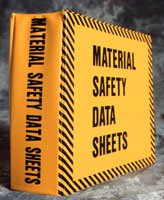

a manufacturer is “a supplier who, in the course of business in Canada, manufactures, produces, processes, packages or labels a hazardous product and sells it”.a supplier is “a person who, in the course of business, sells or imports a hazardous product”.Under WHMIS, who is considered to be a supplier, manufacturer, importer, and distributor? Back to top Note that the federal, provincial, and territorial occupational health and safety WHMIS regulations will also require updating. Suppliers are granted a 3-year transition period (to December 15, 2025) to bring product classifications, safety data sheets and labels into compliance with the amendments. Updates to the Hazardous Products Act and regulations came into force on December 15, 2022. To align with the GHS, the Hazardous Products Regulations were published in Canada Gazette, Part II on February 11, 2015. What is the status of the WHMIS regulations? Back to top This original system is identified as WHMIS 1988.
#Msds stands for series#
WHMIS first became law in 1988 through a series of complementary federal, provincial and territorial legislation and regulations.

The main components of WHMIS are hazard identification and product classification, labelling, safety data sheets, and worker education and training. What are the main parts of WHMIS? Back to top

Aligning with GHS provides many benefits, including: WHMIS has aligned with the worldwide hazard communication system known as GHS – the Globally Harmonized System of Classification and Labelling of Chemicals. It is a comprehensive system for providing health and safety information on hazardous products intended for use, handling, or storage in Canadian workplaces. WHMIS stands for the Workplace Hazardous Materials Information System. WHMIS – Confidential Business Information (CBI).Please refer to the following OSH Answers documents for more information about WHMIS: Suppliers and employers must use and follow the WHMIS requirements for labels and safety data sheets (SDSs) for hazardous products sold, distributed, or imported into Canada. While these jurisdictions based their WHMIS regulations on a common model, small variations between jurisdictions may exist. WHMIS is also regulated in the workplace by the provinces, territories and federal (for federally regulated workplaces) governments under their occupational health and safety legislation. Health Canada is the government body responsible for the overall WHMIS supplier-related laws.

Suppliers are granted a 3-year transition period (to December 15, 2025) to bring product classifications, safety data sheets and labels into compliance with the amendments.įor most workplaces, the most notable impact will be seen in the changes to the flammable gases class, and the new class of chemicals under pressure. The changes introduced in December 2022 are in force. This document reflects the Hazardous Products Regulations requirements as of December 15, 2022. This document discusses the WHMIS supplier requirements as regulated by the federal legislation – the Hazardous Products Act and the Hazardous Products Regulations (HPR). Canada has aligned the Workplace Hazardous Materials Information System (WHMIS) with the Globally Harmonized System of Classification and Labelling of Chemicals (GHS).


 0 kommentar(er)
0 kommentar(er)
